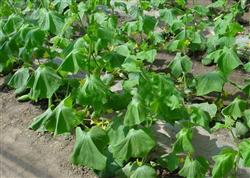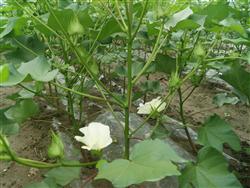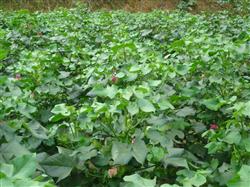What causes cotton to prevent acute wilting after rain?

What causes cotton to prevent acute wilting after rain? Please introduce the causes of acute wilting of cotton: first, the lack of oxygen in the soil. After waterlogging, the root oxygen supply is insufficient, which suffocates the root and affects the normal absorption function of the root. The longer the suffocation time is, the more serious the root damage is. Second, improper fertilization. Excessive topdressing results in excessive concentration of soil solution after rain, which leads to reverse osmosis in cotton leaves. In order to reduce losses, it is suggested that cotton farmers should pay attention to the following measures in management: first, drainage as soon as possible. For the cotton fields with stagnant water, the water in the cotton fields should be discharged out of the fields in time after the rain, and the cotton fields with waterlogging should be broken to dry the soil moisture in time to reduce the surface humidity of the cotton fields and improve the growth environment of the cotton fields. The second is extra-root topdressing. Foliar spraying 0.2% potassium dihydrogen phosphate plus 1% urea mixture, once every 7 days, for 3 consecutive times, can improve the wilting phenomenon of cotton. It is appropriate to spray the back of the leaves after 4 o'clock in the afternoon or on cloudy days. Third, timely prevention and control of diseases and insect pests. Generally, high temperature and high humidity after rain can easily lead to the occurrence of cotton wilt, rotten boll, cotton bollworm, bug bug and other diseases and insect pests. Can be combined with extra-root topdressing for prevention and control. Click to get more cotton planting technology click to get more food crop planting technology
- Prev

How to prevent cotton from rotten bolls (peaches) in rainy season?
How to prevent cotton from rotten bolls (peaches) in rainy season? Please introduce the rainy season can refer to the following methods to prevent cotton boll rot (peach): 1, scientific fertilization: at present, most of the cultivation is insect-resistant cotton, generally requires a large amount of base fertilizer and bud fertilizer, do not apply flower and boll fertilizer, in order to prevent excessive growth, shade aggravation. It is necessary to control nitrogen and increase phosphorus.
- Next

What are the main cotton diseases and insect pests in summer and autumn?
What are the main cotton diseases and insect pests in summer and autumn? Please introduce the main cotton diseases and insect pests and their control methods in summer and autumn: first, the occurrence trend of diseases and insect pests (1) Cotton blind bugs: it is expected to occur in the middle of the flowering and boll period, and the peak period of occurrence is from late August to early September.
Related
- The first cup of black tea in spring, the flavor and history of tea gardens in Kenya, Africa
- The computer can not only choose potatoes, but also grow tea rice. AI will grow winter oolong tea champion.
- It is not only the inflated tea bitten by insects, but also engraved with the four seasons tea in Beipu.
- The Oriental Beauty Tea Festival in Zhuxian County takes the stage at the weekend to experience the plus-size feast of oil tea.
- & quot; Oriental Beauty Tea & Exploration of Emei in Hsinchu, the hometown of quot;
- The new variety of strawberry "Tainong 1" dessert is the first choice with mellow aroma. Crimson gorgeous
- History of Tea in Taiwan: from Wild Inner Mountain to Export Tea Garden
- Two types of Taiwan Oriental Beauty Black Tea won the British three-Star Award for Childhood Tea Xiang Zhang Jiaqi changed from pilot to champion tea maker.
- Banana species and varieties: the planting history of Taiwan Xianren banana and dwarf banana is long, is banana disease resistant?
- Coffee planting Technology: Qianjie Coffee from Seedling to harvesting

